As a business owner, you rely a lot on online advertising. Sometimes it feels like you’re actually running an ad business. And it’s not fun, for most of us, at least. In fact, it can be a rip-your-hair-out, headache-inducing endeavor.
There’s a reason it’s so frustrating, though. The illusory cheapness of online advertising has made many businesses lax about their advertising strategies. “It’ll just be a few hundred dollars, let’s throw this out there and see if it works,” the thinking goes.
Before you know it, you’ve spent thousands of dollars on multiple small, “cheap” campaigns that brought little ROI. Your ads aren’t converting.
That’s bad. And avoidable. Because it is entirely possible to see a much higher ROI from the ads you’re running. However, the key lies not in specific ad campaigns you run—it’s the steps that should come before creating the ad campaigns.
Editor’s note: This article was originally written by Chavvy Helfgott but has been updated and fact-checked by David Hobson, Foundr’s Head of Marketing, whilst retaining the original author’s writing style. David has worked with multiple large brands in the past and is hugely experienced in entrepreneurship and business development.
READ MORE: The 28 Essential Facebook Ad Terms You Need To Know
EXCLUSIVE FREE TRAINING: This New Free Masterclass Will Make You Unstoppable
Why Aren’t Your Ads Converting? The Root of the Problem
Here’s the thing: Around 47% of internet users employ ad blockers! In the words of James Dillon, “The ‘skip now’ button has become an internet user’s version of a hospital patient’s red morphine buzzer. We all just want to stop the pain.”
When those would-be customers are paying to avoid your advertising, something is wrong.
Also, as the online advertising market gets more and more crowded, you’ll quickly find your CAC (Customer Acquisition Costs) rising, unless you find a way to make those ads hyper-focused and super-effective.
And you can. How?
- By running campaigns that resonate with your audience
- By never tossing the long-term goal of a consistent, memorable brand image in
- favor of a short-term ad fad
- By creating ads that are not seen as disturbances, but as enjoyable interludes that talk to your target customer
With that in mind, if your ads are not sufficiently converting, here’s a four-step process you should follow. Implement it before running any ads, and watch your campaigns grow more compelling and successful:
READ MORE: 30 Expert Tips on How to Get 10k More Followers on Instagram
1. Customer Voice Mining
We live in an era when it is so very simple to discover what your target market is talking about—just spy on them!
Well, not literally, but with a few internet searches, you can figure out what is most important to your customers by observing their online conversations.
Hop over to the online forums where they hang out and see what they’re saying.
This includes:
- Quora
- Facebook groups
- Reviews of products they like to buy on Amazon, etc.
- LinkedIn conversations
- Blogs
- Websites of successful companies with your target audience
So let’s say you sell organic clothing for eco-conscious consumers. Head to Google and search “organic living blogs”.

Open a couple of the blogs that show up in the results. Look for relevant posts and comments, then copy and paste the most common, meaningful, and/or relevant words and phrases into an Excel doc.
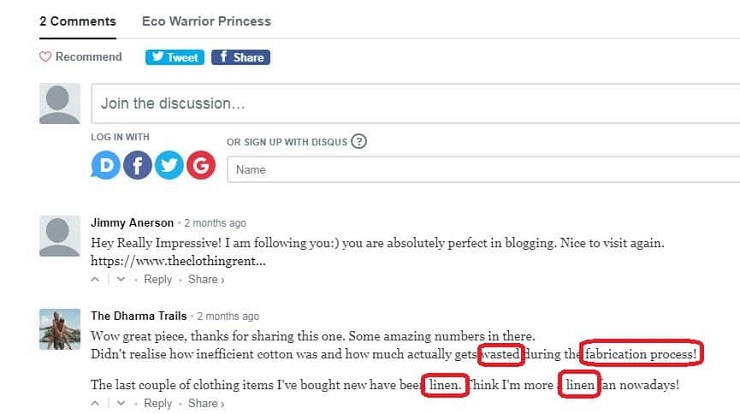
Most of the gold can be found in the customer comments and reviews. But don’t discount some of the blog content, as these writers will often have a finger on the pulse on their audience’s needs.


Next you’ll head over to Amazon, Walmart, or any other company, and search “organic clothing” again. Look for results with many reviews, and yes, you should be looking at negative reviews as well. Often the negative reviews are the best way to learn what your target audience really cares about.
READ MORE: Psychographics 101: Everything You Need to Know; How It’s Used in Marketing
They might wax poetic about sustainability and ethical farming, but when push comes to shove, they want a product that is comfortable, made well, and fits right.



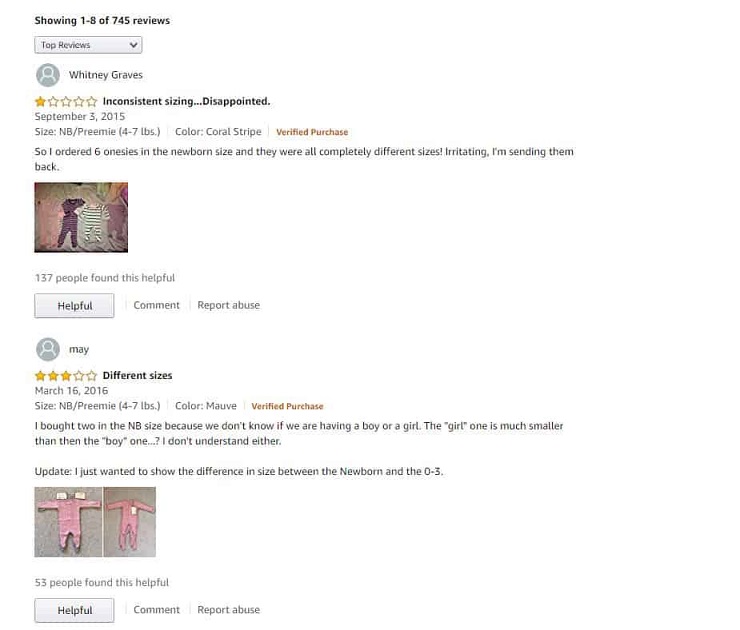
Sizing issues were common in these negative reviews
Now go to LinkedIn or Facebook and search for “organic clothing,” then filter by “content.” Look for comments and conversations by users of the item, rather than from the manufacturers.
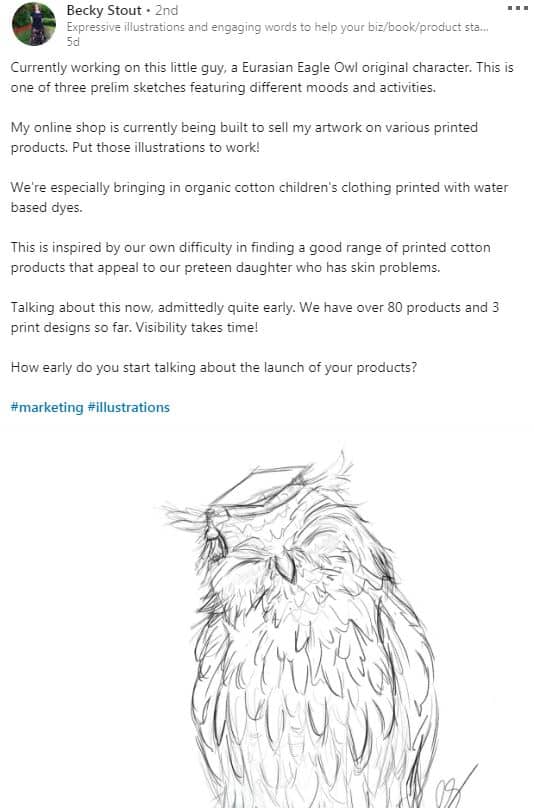
The customer above mentions the fabric appealing to her daughter, who has skin problems. This may not have been something you would have thought about before reviewing the comments.
READ MORE: How to Build a Profitable Marketing Strategy
Organize Your Findings
Create an Excel doc with four columns: words, phrases, what people want, and what people are mad about. (You can even add a column with the number of times each word/phrase appeared.) Save your findings in the doc.
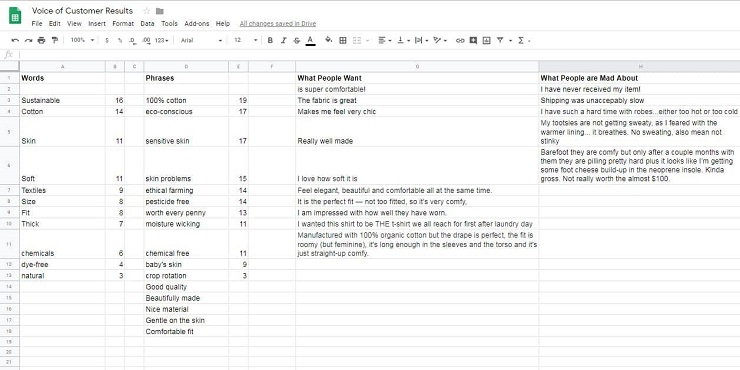
Now you have the language that will resonate with your audience right at your fingertips! We will soon discuss how to integrate this language into your ads.
But first, let’s go on to the next aspect of your ad strategy preparation:
READ MORE: We Went From 0 to $50,000 in Sponsorships in 4 Weeks & How You Can Too!
2. Develop a Consistent, Recognizable Persona Using a Brand Voice Guide
We live in a world of intense, global competition. Unless you make yourself very recognizable and distinct, you’ll quickly be forgotten in the whirlpool of similar businesses.
It takes 5 to 7 impressions to produce a smidgen of brand awareness. One of the best ways to increase “smidgen” to “a lot” is consistency in brand voice and image. Consistent presentation of a brand increases revenue by 23% on average.
In short—your brand voice is really important.
Most brands aren’t way off in the tone of their branding; they just end up sounding like everyone else. Try checking out five different ads for accountants and you’ll have a really hard time differentiating between, aside from their logos.
So how do you avoid that trap?
With a brand positioning and voice guide. Determine for yourself exactly what your brand stands for, and how you express that.
These are the components your guide should have, with examples from a voice guide I created for a realty agency:
A. Voice Summary
Decide what the general sound of your brand should be—something that matches the voice of your customers. Are you sophisticated? Fun? Funny?
To get clues about what the right voice should be, check out how your customers speak, using the spreadsheet you created in the previous step. Example:

B. USP – Unique Selling Point
Unless you’re selling a really revolutionary product, there are lots of other companies out there similar to you. What do you focus on that should attract customers to you? This is your Unique Selling Point. Example:

C. Customer Base
What does your ideal customer look like? Is it newly retired grandparents? Mothers of multiples? Small dental offices? Example:

D. Positioning
Where do you fall among your competition? Are you smaller or larger? More expensive, or cheaper? What is the outcome of your size or price – what benefit does that bring to the client?

E. Brand Persona
If you could choose a person that characterizes your brand, what kind of person would that be? Example:
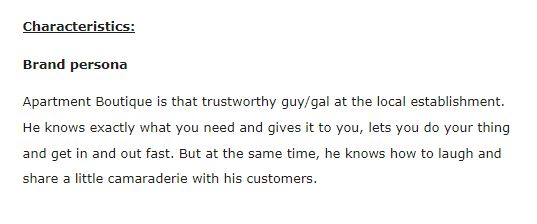
F. Language and Tone
What kind of language do you use—sophisticated, slangy, brief, detailed? And what tone do you use? Authoritative? Friendly? Gentle? Example:
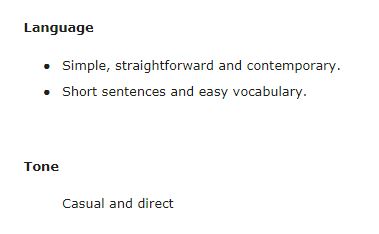
G. Content Goals
Whenever you create content, it should be with a goal in mind. What are your most common goals? Example:
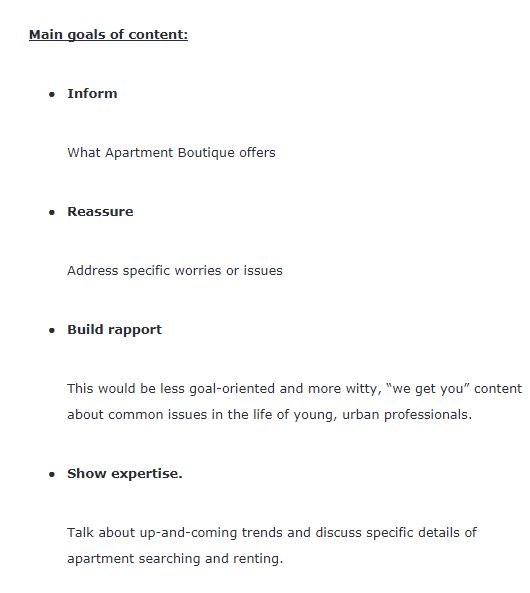
H. Detailed Voice Breakdown
What does your voice sound like? What does it NOT sound like? Be as detailed and thorough as possible. Example:
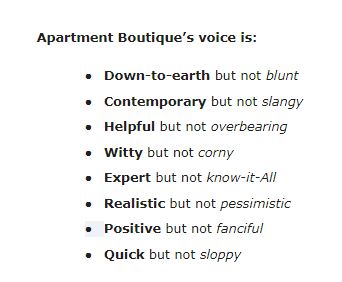
I. Message
What is the overall message you’d like consumers/clients to get from all your content? For example, if you sell easy-care baby clothes, your message might be that dressing your children beautifully does not have to mean hours of laundry care. Ex:
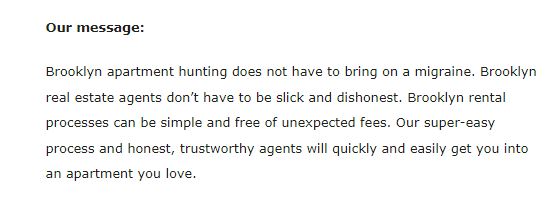
J. How You Make Them Feel
How do you want your customers/clients to feel? Happy? Relieved? Hopeful? Energetic? Example:
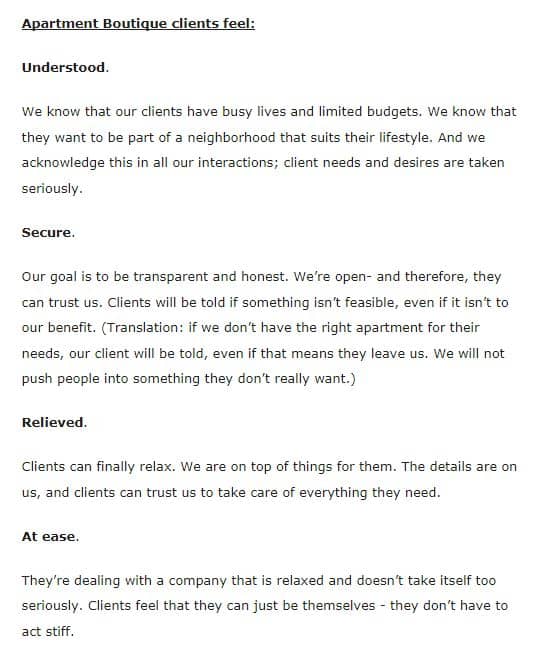
K. Dos and Don’ts
Outline specific things that your company content does and does not do. Example:
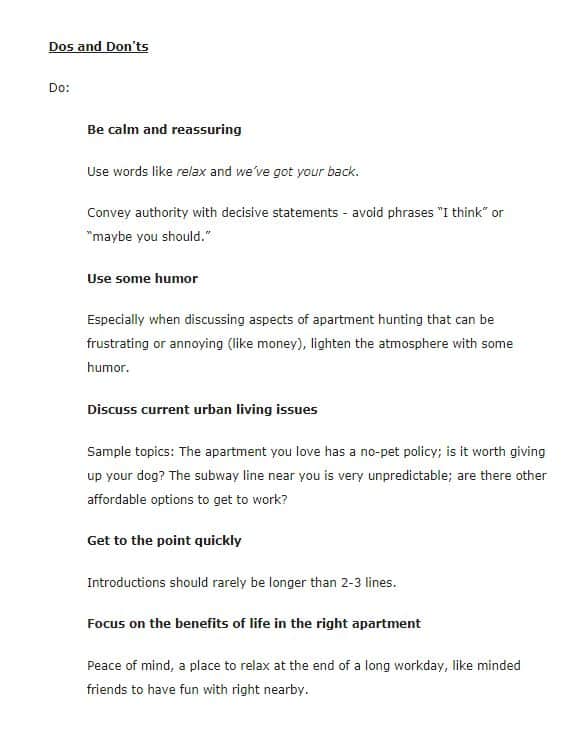
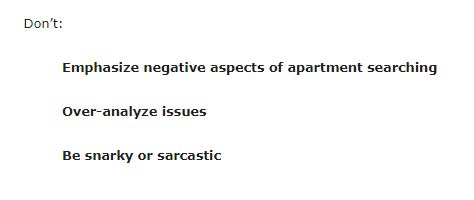
(Find more info on creating a strong brand here.)
How will this clearly defined brand voice help you gain more ROI in ads? Because you know how to speak to your customers in a way that they appreciate, which means they won’t tune out your ads. And if they’re focusing on your ads, they’re a lot more likely to actually purchase your products.
READ MORE: Building the Perfect Sales Funnel for Your Shopify Store
3. Create a Brand Story with an Actual Story
Did you know that stories are 22 times more memorable than facts and figures alone? And besides, people enjoy stories. There’s a reason Hollywood is a multibillion-dollar industry.
So if your ads aren’t converting, you need to get your voice down pat and then craft the story that you’ll be telling in that voice.
Let me tell you a little story about Simms Fishing Waders.
If you type “fishing waders” into Google, you’ll get lots of results, and the majority of them are priced between $49 and $199. So how does Simms sell waders for $700+?
Yes, it’s a very high-quality product. But how do they convince enough people that the quality is worth paying for?
By telling us a story. A story about how its products are designed, who designs them, and who they are designed for. Here’s the story:
Passionate fishers and anglers want to buy waders that can truly withstand the wear and tear of their activities. So Simms hires American engineers that “leave work and head to the river.” Engineers that are immersed in the craft they are servicing. They know what anglers are looking for; they are part of the club. Then, fishers and anglers all over the US can be bold and defy expectations by using lovingly crafted waders.
In summary: It’s a story about kindred souls, a club of passionate anglers using gear made by passionate anglers.
Now here’s how it plays out in ads:
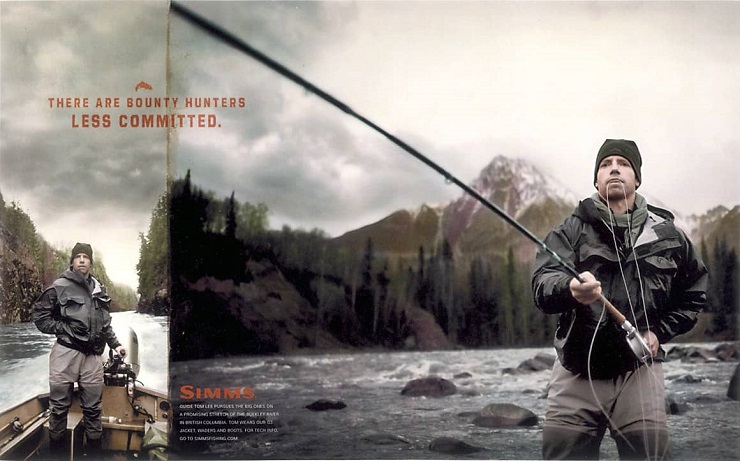
Passion, passion, passion.

We get you; we know what you always dreamed of.
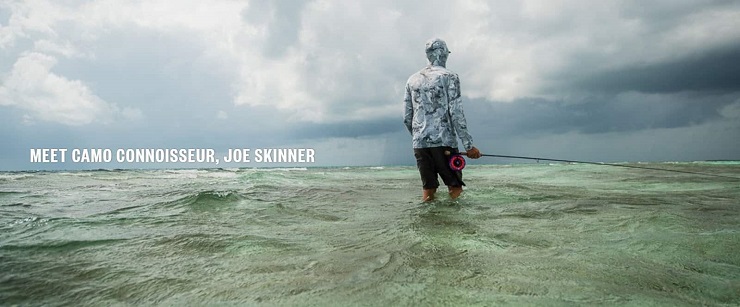
Meet another club member; come and bond with us!
See the passion in each ad? There’s a sense of “we get you; we know what it is to be obsessed with angling because we are also obsessed!”
Simms is telling their story, powerfully.
READ MORE: How to Make Money With Your Email List
Another brand that does a superb job with storytelling? Outdoor gear seller Patagonia. Let me tell you their story:
A mountain climber noticed that his clothing and gear kept getting ruined and that they damaged the environment. So he created a brand of outdoor gear that is extremely durable, is made of eco-conscious materials, and does not encourage people to buy things they don’t need. Now, outdoor enthusiasts all over the world can do what they love in gear that protects both them and the environment.
In summary: It’s a story about outdoor lovers who want to become one with nature, both through their sports and their eco-conscious activities.
Here’s how they tell the story in their ads:
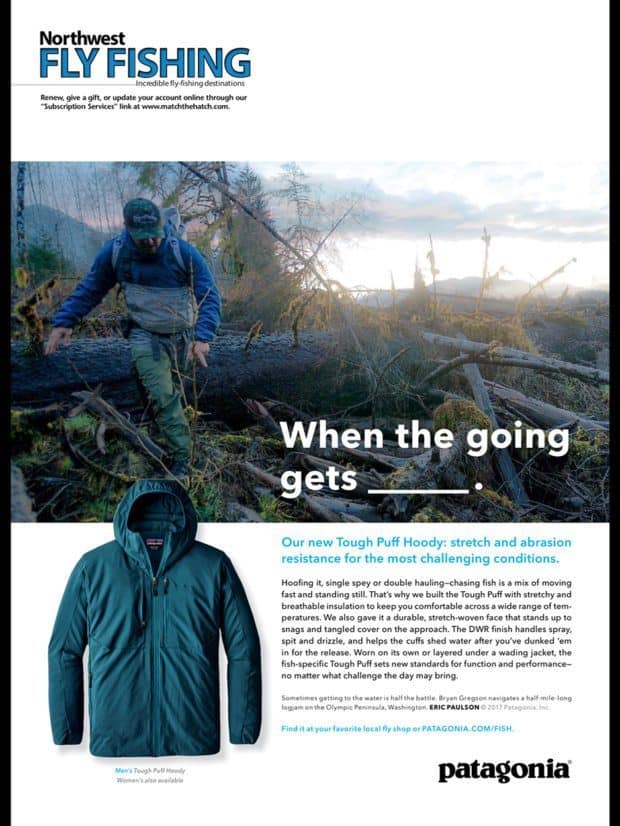
Tough clothing for tough activities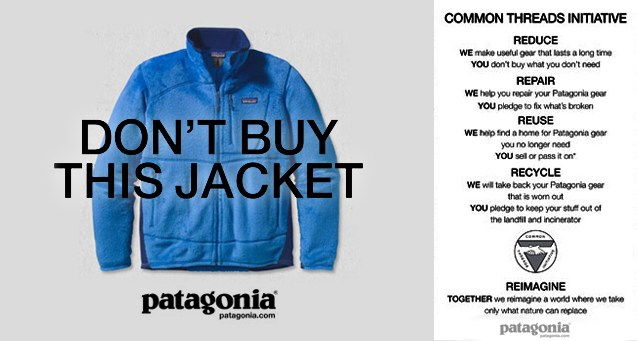 Protect the environment
Protect the environment
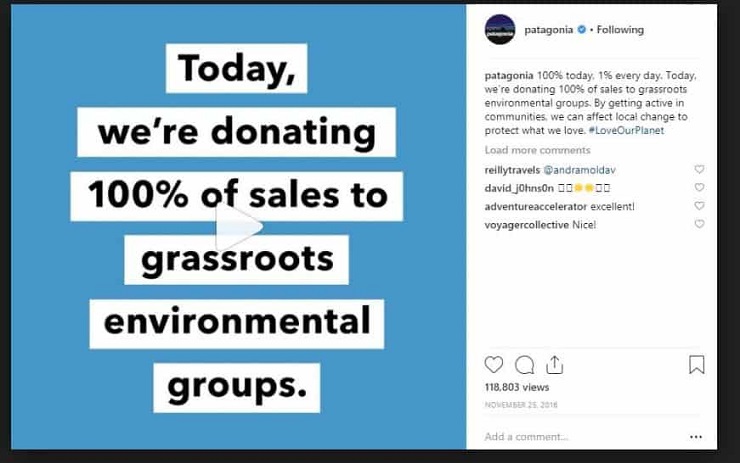
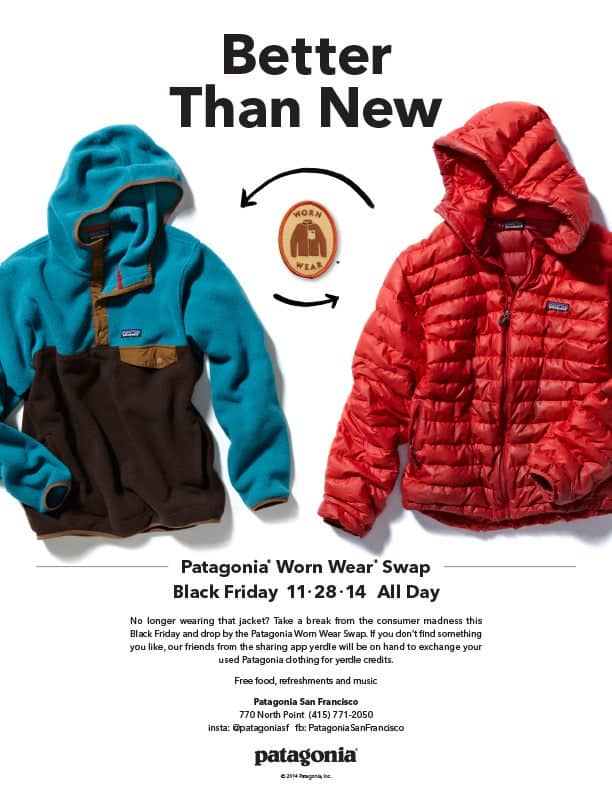
We really, truly care about the environment. Even at the expense of our bottom line.

Amy’s jacket can withstand her extreme running, and she’s protecting the nature she loves by wearing it.
These two examples were clothing brands. Don’t worry, though—it’s not just consumer goods brands that make great stories. Let’s take a look at monday.com.
Somewhere out there, there’s a very busy team with many projects on their to-do list. But there’s such a chaos of communication that nothing is getting done. FInally, they get a monday.com subscription and input everyone’s tasks, and before long, things are getting accomplished! The team is calm, the manager is calm, the client is thrilled, and the project gets completed.
In summary: A chaotic team becomes an efficient team.
Build a mission around your customer’s conflict
What is your customer’s problem? How does their life look now? Tell a story of how their life looks with your product/service. Your mission is to make their life look like that.
Example: Back to the organic clothing. Let’s say your ideal customer’s problem is keeping her baby healthy in an unhealthy world. How do you help her accomplish that? By providing clothing she knows is made of only healthy stuff.
READ MORE: How Competitive Collaboration Can Boost Your Business
Empathize with them
How does your customer feel before your product? How do they feel afterwards? Your ads should convey these emotions.
Example:
Before – Worried about her baby absorbing chemicals; protective
After – Calm, reassured, confident
Understand why your version of this story is different
What is the ONE thing that makes you better/different than your competitor? This should be the highlight of your advertising.
Example: Your products are organic AND easy to care for. Or maybe they’re cheaper than most organic clothing.
Plot your story.
Example: My baby suffered from various mysterious skin conditions. I tried so many different treatments and doctors, but nothing gave long-term relief. Finally, I decided to try organic, chemical-free clothing—and her skin problems soon disappeared. But so much of the organic clothing out there was so difficult to care for, and as a working mom, I simply didn’t have the time for complicated clothing care. That’s why I decided to create a line of organic baby clothing that is also practical for moms. I’m spreading the joy and security of healthy clothing among even the busiest moms.
Simplify your story.
See if you can put the story into a single sentence. At most, two sentences.
Example: Mothers all over the world feel secure and relaxed as they care for their healthy, comfortable babies.
Putting It All Together (Watch Me Turn a Bad Ad Into a Good Ad)
So now you know:
- How your customer talks and what they talk about.
- Exactly how your company should sound at all times.
- What your story is.
Awesome! You have all the tools you need to create effective ad campaigns that will build on each other and be seared into the viewers brains.
Let’s take a disjointed brand and create powerful, customer-attracting ads for them by applying this method. Here goes.
Etsy regularly posts ads on Facebook and Instagram. Below are several screenshots of ads. Beneath each screenshot, I’ve left short points about the content and voice.
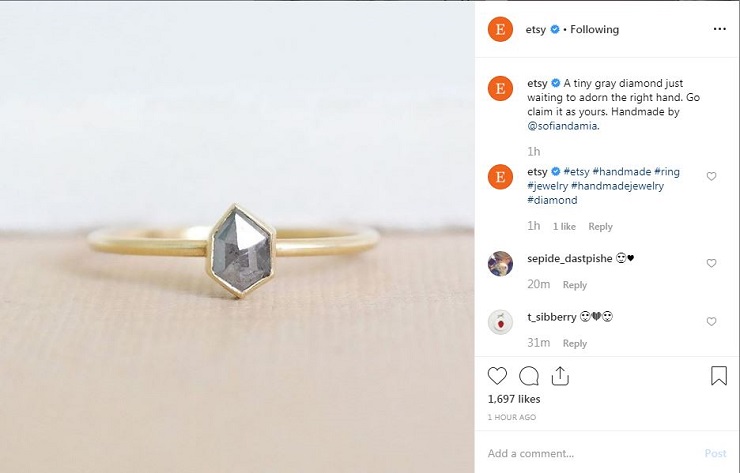
Content: Fact driven
Voice: Bland with a touch of authoritative

Content: Fact driven
Voice: No voice at all

Content: Cultural reference and facts
Voice: Slightly playful
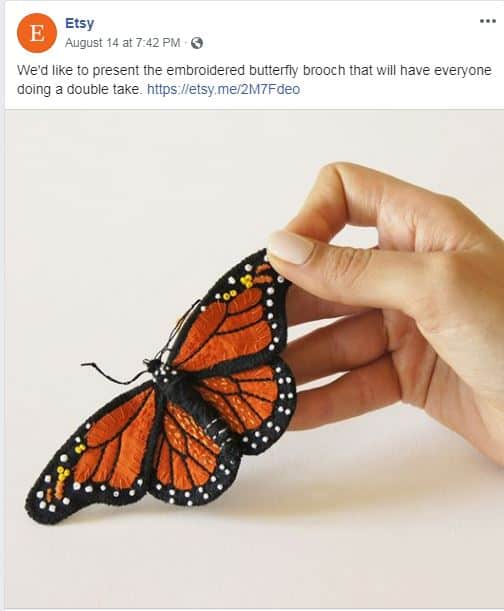
Content: Fact and benefit
Voice: Official

Content: Benefits
Voice: Friendly
As you can see, there is no common thread running between these ads. It’s simply a presentation of various items sold on Etsy, each with a totally different content style and voice.
This means:
It’s not memorable.
We get no sense of Etsy’s identity.
Each ad is a very obvious sell that sometimes attempts to also entertain.
Solution? Let’s do some mining for the voice of the customer, and then craft a voice and story for Etsy based on that. (This will be a condensed version of the full process.)
I did some mining and came up with the following:
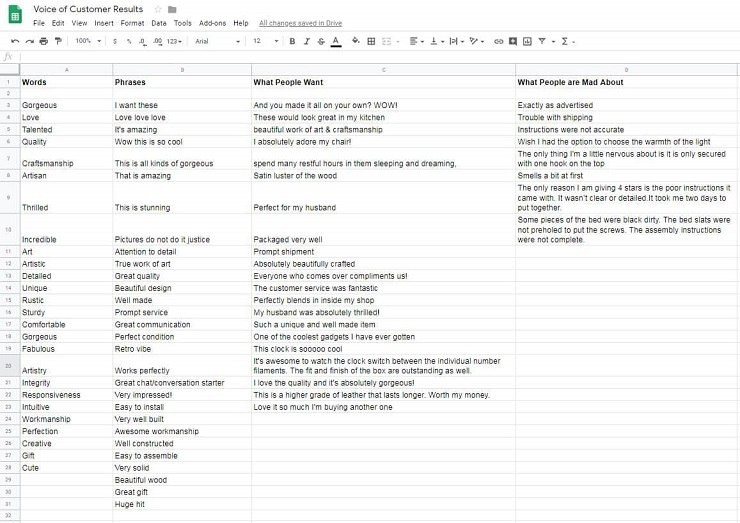
This is the voice summary I created based on the above:
Etsy’s voice is enthusiastic and full of life. It’s detailed, vibrant, and colorful, infused with a dreamy, artistic undertone.
Now let’s craft a story.
Build a mission: This is already written right in Etsy’s about page. “Keep human connection at the heart of commerce.” How? By giving creative craftspeople a simple way to sell their goods online, and giving consumers an alternative to mass-produced goods.
Empathize: You don’t want a home filled with generic items produced in a mindless factory. And you don’t want to give gifts that are just like all the other gifts your recipient will be getting. You want unique, special, handcrafted items that were created with love.
READ MORE: Is Your Business Not Making Enough Money? Here’s How to Fix It
Understand your difference: Etsy is the largest marketplace catering exclusively to handcrafted and vintage items. They provide many resources to help independent artists succeed. This means shoppers have a huge selection of handmade items, so they can find the perfect thing, while at the same time supporting creative endeavors around the world.
Plot story: An artisan sits in her workshop, crafting a beautiful accessory or furniture piece. She carefully chooses her materials, pores over every detail, until the piece is finished. Now she wants to share her passion with the world, but all around her people rush into shops grabbing boring, mass-produced alternatives that are a lot cheaper than her products. How can she find someone who will appreciate her artwork, treasure the passion she put into it? Then, she finds a platform where lovers of handiwork congregate—and she finally finds the perfect home where her creation will be appreciated and admired.
Simplify story: A dedicated artisan pours heart and soul into a piece of work, and places it for sale on Etsy so it can find a home where it will be loved and appreciated.
So now we have a voice and a story for Etsy. Let’s rewrite the copy for the ads above using the new guidelines.
Handcrafted curves by @sophiandmia. Looking for a finger to hug.
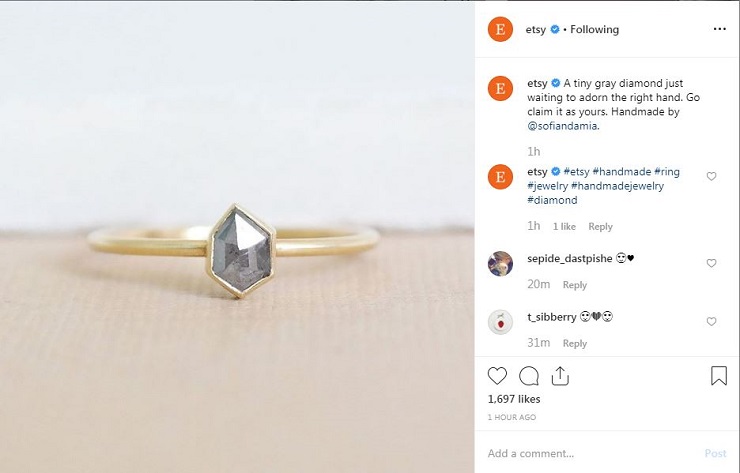
Vibrant yarn, crafted stitch by stitch into delicate bags. Your wrist is waiting for one. See the options in @mon.truc.co shop.
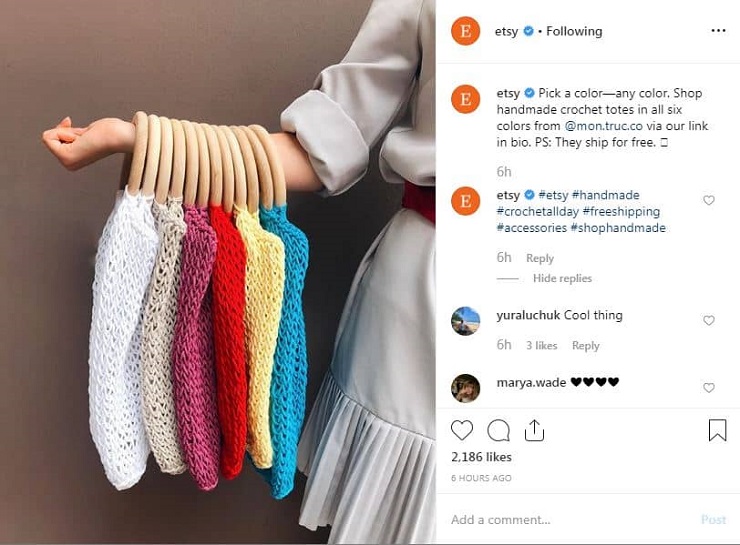
From @blueterracottas fingers to your heart. Lovers of monarchs, meet your dream.
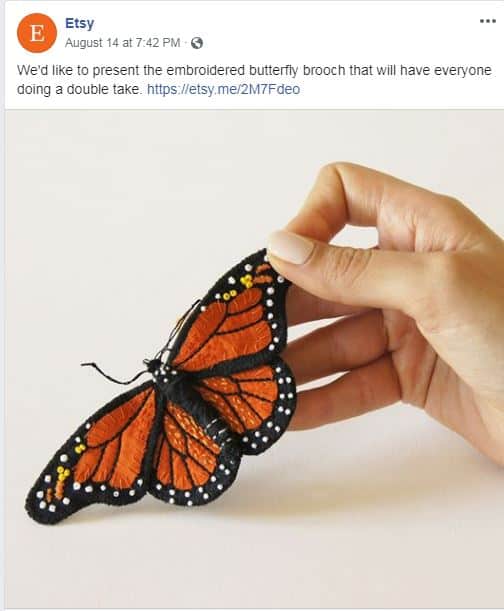
Nature’s best colors, captured in thread. Feast your eyes even on cloudy days.
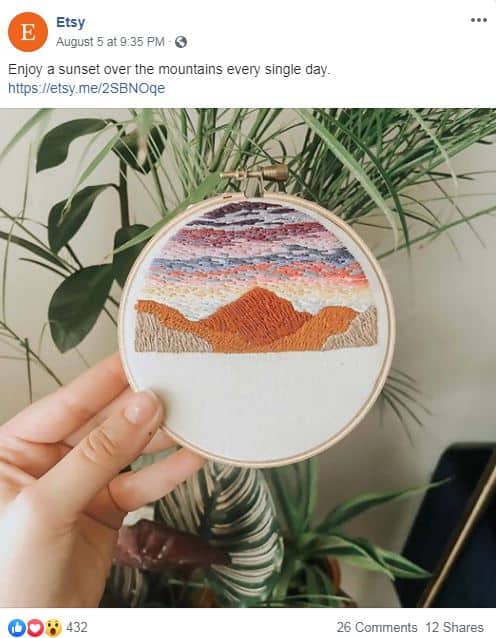
And BOOM! The ads are suddenly memorable. They tell a story. They speak the language of the audience.
EXCLUSIVE FREE TRAINING: This New Free Masterclass Will Make You Unstoppable
It’s Your Turn
Now it’s time for you to go create a powerful foundation for your advertising campaigns. And once it’s done, and you’re ready to launch a new campaign, ask yourself:
- Does this talk about what my customers talk about, using the language my customers use?
- Does this match the voice laid out in the voice guide?
- Does it fit into the company story?
If the answer to all three questions is yes, you can get ready to launch your campaign.
What story do you think your product/service tells? Did you recently run a campaign that really personified your brand? Let me know in the comments!
The post How to Increase the ROI of Your Online Ads (Before You Actually Run Them) appeared first on Foundr.
via https://AiUpNow.com February 8, 2021 at 11:02PM by David M Hobson, Khareem Sudlow,
